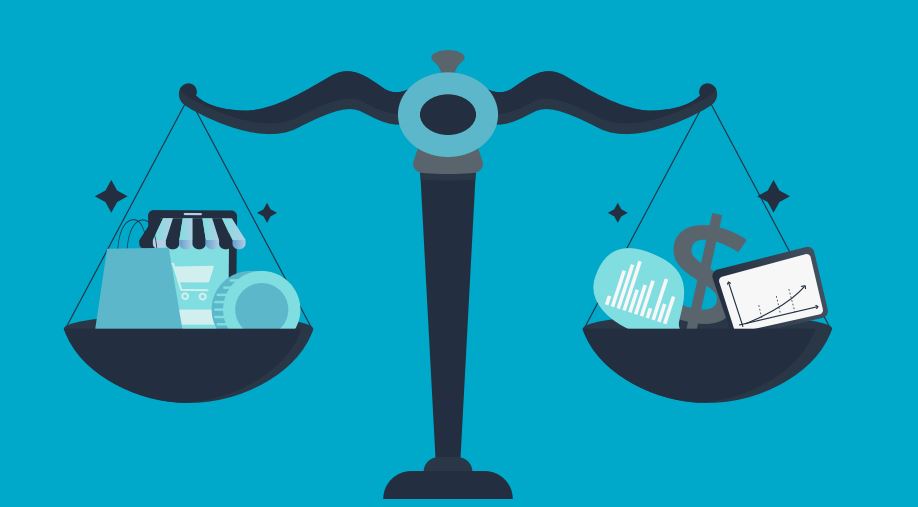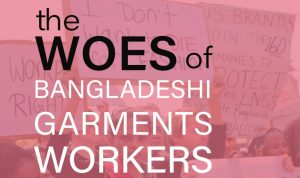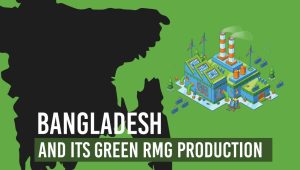Why do we buy dollars? Why its price is always eightyfold higher than our currency? Have we ever sit for a while to think how the dollar rate to taka fluctuates though remains almost the same? The demand program for $-৳ is such complex that it barely gets changed.
For a particular product, if it possesses a higher demand in the market, it will have a higher price as the suppliers need to cope up with the demand and if they can’t, they price the product in a way that demotivates higher demand. Whereas, if a product has a higher supply, it means that the public may possess a lower demand for which reason they didn’t seem to buy the products and ultimately made an abundance of unsold items. In such a situation, a supplier will keep the product’s price relatively lower, so that the low price motivates consumers to buy more.
What if we interchange the word PRODUCT with CURRENCY?
If today, 1 lakh Bangladeshis want to import some products from the USA, definitely they will crowd money exchangers to buy USD, creating a sudden demand surge of USD. To cope up with the demand also with a mean of profit, the exchangers will promptly increase the exchange rate of dollars, (e.g. from 84৳ to 85৳). As now the rate is increased many people will feel demotivated to import resulting in an astray of import from those people.
THE RICE EFFECT
Suppose, Bangladesh exports rice to the USA. This year, American vendors show great interest in this product. This year the production was less. So, to maintain demand, the price of rice was raised. The USA still imported rice with the incremented price making the total dollar reserve of Bangladesh increased. More dollars inside the country allows exchangers to sell dollars at a cheaper rate. So, dollars now are sold for 83-taka per. Country people now can avail more dollars to buy US products against a smaller amount of taka. So, imports of Bangladesh also got raised making taka reserve in the USA increased. It means, US exchangers can offer BDT at a cheaper rate now, meaning a fall in taka value. The process is continuous and always tries to move to a point where at a particular price, no buyer or seller has any incentive or desire to change the quantity demanded or supplied, all other factors remaining unchanged. The point is called Market Equilibrium.
So, rice can have a good impact on FOREX. But can FOREX have an impact on Rice?
Suppose, there is seen a good export of BD garments to the USA this year. As a result, taka’s value increased and the dollar’s value decreased. So, USA importers thought of buying less rice from Bangladesh. On the other hand, suppose rice saw a mass production this year. What will happen is that a huge amount of this product will remain unsold, begetting a huge loss. Such a loss will have an immense impact on the agriculture industry.
So, what we are seeing is that if rice price increases for higher demand, dollar supply increases, taka’s value increases, dollar’s value decreases. We can see a sitive cross-price elasticity etween rice and taka’s value. This elasticity means that if one’s price increases another’s demand also will increase. We can see a gative cross-price elasticitybetween rice and dollar. This elasticity means if one’s price increases another one’s price will decrease. This is a theoretical situation that can happen but not necessarily always happens because there are always alternatives for countries.
When a country holds a lot of exports all around the world, its currency gets stronger. Citizens all across the show interest in that country’s products and ultimately buys that currency for purchasing. That is the basic international B2C trade. Now, think about the USA. Think about Kuwait and now think about their product’s demand. Medicines made in the USA, oil from Kuwait always possess a higher demand which means to cope up with this demand the suppliers from these two countries need to keep the price high. However, consumers end up buying these high valued products with the exchange of their currencies. This BUY results in a higher supply of these currencies inside Kuwait and the USA. To liquidate this excessive supply, exchangers of Kuwait and the USA can certainly sell these currencies for a lower number of KWDs and USDs respectively. This type of exchanges all across these two countries ultimately result in a higher value of KWD/USD compared to other currencies traded. That is how forex works.
CAN A GOVERNMENT CONTROL THE FOREX RATE?
Yes, it can. Governments have the capabilities to control a particular industry of their country. For example, the tobacco industry of Bangladesh. What if the tax rate for tobacco companies was only 20% but not 45%? This industry will boost, make more exports and generate more foreign currencies inside our country. After this reduction in taxes, taka’s value will certainly increase compared with other currencies. But the same strategies are also applied by other governments. So, if Bangladesh gets so many dollars by exporting premium tobaccos at the same time the USA will get so many takas by exporting medicines.
Ultimately the forex rate doesn’t change significantly overnight. It changes, slowly. In some months it falls when seasonal exports occur. In some months, it rises when seasonal imports occur. Sometimes, governments can create more demands for their produces, e.g. COVID Vaccine by a country. Sometimes, excessive supply will also come to an impact, e.g. too many jute products produced to export in BD. This FOREX and Demand-Supply program is a Fluctuating Constant, meaning it fluctuates but at the same time it comes back to the equilibrium.




